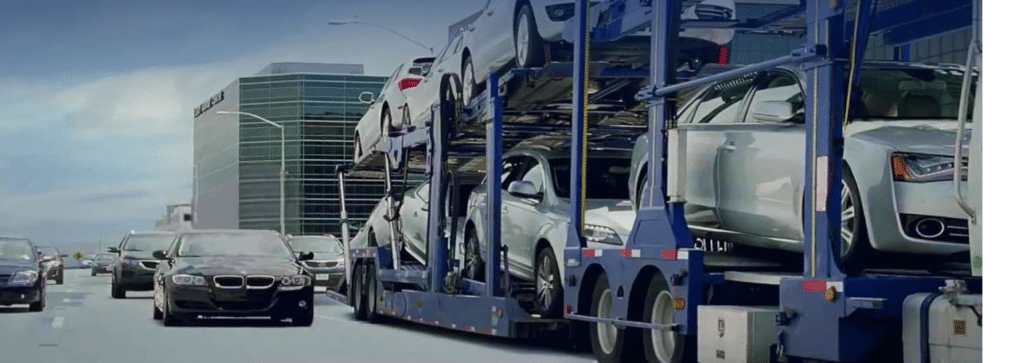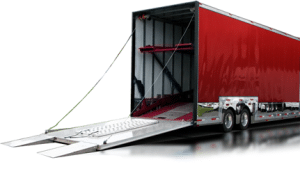Understanding Vehicle Shipping Options
When it comes to shipping your vehicle, understanding the various options available is crucial for making an informed decision. Vehicle shipping can be broadly categorized into two main types: open transport and enclosed transport. Each method offers distinct advantages and is suited to different needs and budgets.
Open transport is the most common and cost-effective method for shipping vehicles. In this type of transport, your car will be loaded onto an open-air trailer along with several other vehicles. This option is widely used due to its affordability and efficiency. However, because the vehicle is exposed to the elements, it may not be ideal for high-value or classic cars that require extra protection from weather conditions, road debris, or potential damage.
Enclosed transport provides a higher level of security by placing vehicles in a covered trailer. This method protects your car from external elements and road hazards, making it an excellent choice for luxury cars, antique vehicles, or any automobile that demands extra care during transit. While enclosed transport is generally more expensive than open transport, the added peace of mind can justify the additional cost for many owners.
Beyond these primary categories, you may also encounter terminal-to-terminal versus door-to-door services. Terminal-to-terminal involves dropping off and picking up your vehicle at designated locations, which might offer more scheduling flexibility but could require additional travel on your part. Door-to-door service delivers your car directly to a specified address, providing maximum convenience albeit sometimes at a higher price.
Understanding these options allows you to tailor the vehicle shipping process according to your specific needs—whether that’s prioritizing cost-efficiency or ensuring maximum protection for your prized possession.
Preparing Your Vehicle For Transport
Preparing your vehicle for transport is a crucial step in ensuring a smooth and hassle-free shipping experience. Proper preparation not only protects your vehicle but also helps the transport company handle it more efficiently. Start by thoroughly cleaning your car, both inside and out. A clean exterior allows you to conduct a detailed inspection for any pre-existing damages such as scratches, dents, or paint chips.
Document these imperfections with photographs and notes; this will serve as a reference in case of disputes about new damages that might occur during transit.
Next, remove all personal belongings from the vehicle. Items left inside can shift during transport, potentially causing damage to the interior or getting lost. Additionally, most auto transport companies have policies that prohibit transporting personal items due to insurance restrictions.
Ensure that your car is in good working condition before handing it over to the shipping company. Check fluid levels, tire pressure, and battery charge. If there are any mechanical issues or leaks, inform the shipping company ahead of time; some may refuse to transport vehicles that are not roadworthy.
Disable alarms and anti-theft devices to prevent them from accidentally triggering during transit. If possible, retract antennas and fold in side mirrors to reduce the risk of them being damaged.
Finally, keep fuel levels low—around a quarter tank is ideal—as this reduces weight without compromising the ability to drive on and off transport trucks if necessary. By taking these steps seriously, you help ensure your vehicle arrives at its destination safely and without unnecessary complications.
Choosing A Reliable Vehicle Shipping Company
Choosing a reliable vehicle shipping company is a crucial step in ensuring that your car reaches its destination safely and on time. The first consideration should be the company’s reputation. Look for companies with strong reviews and high ratings from previous customers. Online platforms like the Better Business Bureau, Trustpilot, and Google Reviews can provide valuable insights into customer experiences.
Another important factor is the company’s licensing and insurance coverage. Verify that the shipping company is properly licensed by checking their Department of Transportation (DOT) number or Motor Carrier (MC) number. This ensures that they are authorized to operate and comply with federal regulations. Additionally, inquire about their insurance policies to understand what type of coverage is provided during transit. A reputable company should offer comprehensive insurance to protect your vehicle against potential damages.
Experience also plays a significant role in determining reliability. Companies with years of experience in vehicle shipping are more likely to have established protocols for handling various types of vehicles and navigating potential challenges during transportation. They are also more likely to employ knowledgeable staff who can provide accurate information and support throughout the process.
Communication is another key aspect when selecting a vehicle shipping company. Choose a provider that offers clear, transparent communication channels, providing regular updates on your shipment’s status and being readily available to answer any questions or address concerns.
Finally, consider obtaining multiple quotes from different companies to compare pricing structures and services offered. While cost shouldn’t be the only deciding factor, it’s important to ensure you’re getting value for your money without compromising on quality or safety.
By carefully evaluating these factors—reputation, licensing, insurance coverage, experience, communication practices, and pricing—you can confidently choose a reliable vehicle shipping company that meets your needs effectively.
Obtaining And Comparing Shipping Quotes
When it comes to shipping your vehicle, obtaining and comparing shipping quotes is a crucial step that can save you both time and money. Start by researching reputable auto transport companies online. Look for reviews, ratings, and any testimonials from previous customers to ensure you’re dealing with a reliable provider. Once you’ve shortlisted a few companies, reach out to them for quotes.
When requesting quotes, be prepared to provide essential details about your vehicle and the shipment. This includes the make and model of the car, its current condition (whether it’s operable or inoperable), pick-up and delivery locations, as well as your preferred shipping dates. Some companies might also ask about specific requirements such as enclosed transport versus open transport.
As you begin receiving quotes, take note of what each one includes. While price is an important factor, it’s not the only one you should consider. Pay attention to the services offered within each quote: does it include door-to-door service? Are there additional fees for fuel surcharges or insurance? Understanding what each quote covers will help you make an informed decision.
Moreover, don’t hesitate to ask questions if anything is unclear or if there are discrepancies between different quotes. A reputable company will be more than willing to explain their pricing structure in detail.
Lastly, while budget constraints are understandable, beware of prices that seem too good to be true; they often are. Extremely low rates may indicate subpar service or hidden fees that could emerge later on. By thoroughly comparing all aspects of each quote—not just the bottom line—you’ll be better positioned to select a trustworthy company that meets your needs without breaking the bank.
Booking Your Vehicle Shipment
Booking your vehicle shipment is a critical step in ensuring a smooth and hassle-free transportation process. To start, research reputable shipping companies that specialize in vehicle transport. Look for companies with positive reviews, proper licensing, and insurance coverage to safeguard your vehicle during transit. Once you have a shortlist of potential companies, request quotes from each to compare prices and services offered.
When contacting these companies, be prepared to provide specific details about your vehicle, including its make, model, year, and any modifications it may have. Additionally, inform them of the pick-up and delivery locations as well as your preferred dates for shipment. This information is crucial for obtaining an accurate quote and ensuring that the company can meet your scheduling needs.
After receiving quotes and evaluating the options based on cost, service quality, and customer feedback, select the company that best fits your requirements. Before finalizing the booking, carefully review the contract terms and conditions. Pay close attention to cancellation policies, liability coverage, and any additional fees that may apply.
Once you are satisfied with the terms provided by the chosen company, proceed with booking your shipment. Provide all necessary information accurately to avoid any delays or misunderstandings later on. Most companies will require a deposit at this stage to secure your reservation.
Upon completing the booking process, confirm all details with the shipping company one more time before the scheduled pick-up date. This confirmation ensures that both parties are on the same page regarding timelines and expectations.
By following these steps diligently when booking your vehicle shipment, you can contribute significantly to a seamless shipping experience while minimizing potential issues along the way.
Documenting And Insuring Your Vehicle
When preparing to ship your vehicle, meticulous documentation and proper insurance are pivotal steps to ensure a smooth and worry-free process. Begin by thoroughly cleaning your vehicle inside and out. This not only presents your car in its best light for inspection but also makes it easier to identify any pre-existing damages. Take detailed photographs of your vehicle from multiple angles, capturing close-ups of any scratches, dents, or other imperfections.
These images will serve as crucial evidence should any disputes arise regarding the condition of your vehicle upon delivery.
Next, gather all necessary documents. The most important include the vehicle registration, proof of ownership (such as the title), and a valid ID. If you’re shipping a financed or leased car, you may need authorization from the lender or leasing company. Additionally, verify that there are no outstanding liens on the vehicle that could complicate the shipping process.
Insurance is another critical aspect of shipping your car. While most reputable auto transport companies provide basic coverage, it’s essential to understand what their policy entails and whether it suffices for your needs. Review their terms carefully—some policies might have exclusions or limits that leave certain types of damage uncovered. For added peace of mind, consider purchasing supplemental insurance through a third-party provider if needed.
Before handing over your keys to the carrier, ensure all paperwork is in order and double-check that you’ve documented every detail accurately. By taking these steps seriously—thorough documentation paired with adequate insurance—you can confidently mitigate risks and safeguard against potential issues during transportation.
Tracking Your Shipment Progress
Tracking the progress of your vehicle shipment is a crucial aspect of ensuring a smooth and stress-free experience. Once your vehicle is on its way, knowing its location and estimated arrival time provides peace of mind and allows you to make necessary arrangements for its reception. Here’s how to effectively monitor your vehicle’s journey.
Most reputable vehicle shipping companies offer advanced tracking systems, often integrated into their websites or mobile apps. These systems allow you to receive real-time updates on the status of your shipment. To utilize these tools, you will typically need a tracking number provided by the shipping company once your vehicle has been dispatched.
Using the tracking number, log into the shipping company’s portal or app. There, you can view detailed information about your vehicle’s current location, transit route, and expected delivery date. Some companies also send automatic notifications via email or SMS at key stages of the journey—such as departure, mid-transit checkpoints, and arrival at the destination terminal.
In addition to digital tracking tools, direct communication with customer service representatives can offer additional insights and reassurance. Reputable companies usually have dedicated support teams available to answer any questions or address concerns regarding shipment progress.
During transit, it’s essential to stay proactive but patient. While technology provides accurate updates most of the time, unforeseen circumstances like weather conditions or traffic delays can impact delivery schedules. Regularly check for updates but also maintain flexibility in case there are minor deviations from the expected timeline.
By leveraging both digital tracking tools and effective communication with your shipper’s support team, you can keep track of your vehicle’s shipment progress efficiently and ensure that it arrives safely at its destination.
Receiving And Inspecting Your Delivered Vehicle
Once your vehicle has arrived at its destination, it’s crucial to follow a systematic approach to receiving and inspecting it. This final phase ensures that the vehicle is in the same condition as when it was handed over for shipping, and it also helps address any issues promptly.
First, be present or designate a trusted representative at the delivery location. The carrier will typically notify you ahead of time regarding the expected arrival date and time. Being punctual is essential since carriers often have tight schedules and may charge additional fees for extended waiting periods.
Before signing any documents, conduct a thorough inspection of your vehicle. Begin with an external review, meticulously examining all sides of the car for any signs of damage such as scratches, dents, or chipped paint that might have occurred during transit. It’s beneficial to have the original condition report (Bill of Lading) on hand to compare against your pre-shipping inspection notes and photographs.
Next, move on to an internal check. Inspect the interior for any new stains, tears in upholstery, or other damages that were not previously noted. Additionally, ensure that all personal belongings you left in the car are still there.
If you identify any discrepancies or damages during this inspection process, document them immediately with detailed photos and written notes. Report these findings to both the driver and your shipping company before signing off on any paperwork. Make sure these issues are recorded on the Bill of Lading; this document will be critical if you need to file an insurance claim later.
Finally, after ensuring everything is in order—or documenting otherwise—you can sign off on the delivery receipt. Taking these precautions allows you to enjoy peace of mind knowing your vehicle has been delivered safely and securely.












